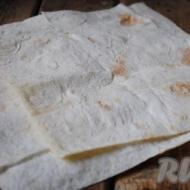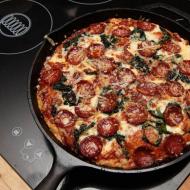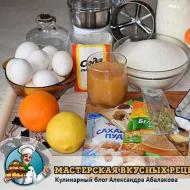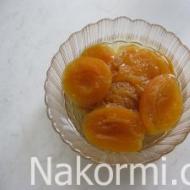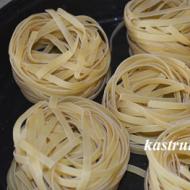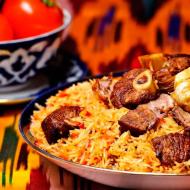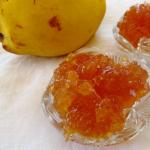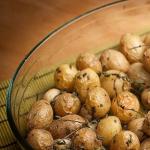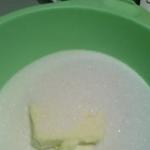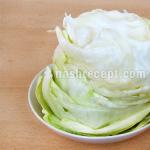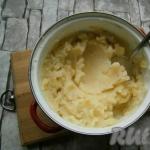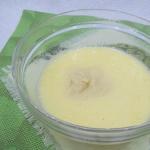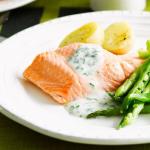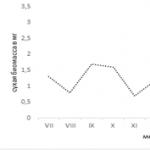
My Odessa cuisine. Savely Libkin. Cooking according to books: Odessa cuisine Recipe. Pike perch under marinade
Irina Sergeevna Potanina
Odessa cuisine
I am what I eat
Confession of an almost Odessa woman
It's logical to assume that I want to talk about food. After all, according to many, the consumption of this or that food largely determines one’s character. So, my friend who has become a vegetarian likes to repeat that meat makes us aggressive. And a mutual friend, listening to her attacks on meat-eaters, always answers, they say, the aggression of a predator is a necessary thing in our life, and the one who prefers plants ends up with a herbivorous character. So what if the characteristic features of entire nations are explained by their passion for certain national dishes.
But, oddly enough, my article is not about food at all. About other food...
I once dreamed of writing a thesis on “The influence of city architecture on the formation of a creative personality.” Did not work out. But since then, I have often returned my thoughts to the topic, again and again becoming convinced of the importance of this relationship. For me, nationality is determined not by place of residence or birth, not so much by the blood in your veins, but by the number of features and characteristics of the city or country that you have adopted into yourself...
I thought about this again today, standing in the middle of Odessa, wet, cold, so dear that my heart ached. For the first time, I told myself that, being a native Kievite of God knows what generation, in character, disposition and temperament, I am most likely an Odessa native. Precisely because as a child I was fed, like porridge, not with Kiev, but with Odessa.
Until the age of 16, I was a typical bookish girl, locked in a triangle of home-school-circle in the Palace of Pioneers - and again home. But almost every summer our family went to Odessa to visit the Dacha. And, unlike in Kyiv, my life in Odessa was continuous “+ infinity”. An endless sea that my mother could never pull me out of. Endless excursions, trips to distant shores and rocky beaches, hours of walking around the city, museums and theaters, including the most beautiful Odessa Opera House in the world. An endless, serial-like story of the old Dacha, where several generations of our family grew up, Dacha, who still remembered my grandmother as a funny toddler in bloated panties (I adored my grandmother’s stories about her childhood dacha adventures and asked me to repeat them again and again). Endless relatives - uncles and aunts, cousins, many children, together with whom we came up with thousands of games. Endless adventures - with my best friend from Odessa, we constantly climbed trees, fences and roofs, doused passers-by with water, came up with pranks and tricks. The quiet Kiev woman turned into a completely robber element in Odessa...
Later this metamorphosis occurred in my biography. A marvelous vinaigrette of wonderfully controversial qualities simply could not go unnoticed! Unsinkable confidence in my own originality and uniqueness, sharp language, jokes (sometimes to the point of foul), desire to dress brightly (sometimes to the point of bad taste, but in Odessa it was always customary to shine three times brighter than in Kiev!) and even the conviction that I have the right to break out the Russian language according to your own understanding - all this is the upbringing of the legendary Odessa.
It was Odessa that helped me understand - we are what we consume, taking inside. We are raised by cities and countries, families and people, whose ideas we absorb into ourselves so much that they become us. (But it happens the other way around: the country, the environment - they don’t go, they stand in the throat like a fish bone, causing the process of reverse peristalsis.) “I am what I eat.” In all senses. It seems like a simple thought, but how often do we neglect it to our own detriment. It is difficult to become a great creator if for breakfast, lunch and dinner you consume exclusively low-quality literature and stupid pop music. It’s hard to believe in yourself if your “menu” only includes reproaches, pokes, criticism from loved ones, those who are convinced: nothing worked out for them, and nothing will ever work out for you either. And how easily we become infected with faith from those who truly believe in us, believe in themselves, believe in the best!
The common advice of all psychologists is: do not communicate with losers. Their failures are contagious, they drag you down along with you. If you want to quit drinking, first quit drinking company. If you want to elevate your soul, surround yourself with the highly spiritual. A couple of years ago, one of my friends (by pure chance, she is from Odessa) began an affair with a famous show business figure. She herself had no relation to this area, nor any desire to get involved there. However, in the second year of their romance, she had to retrain from just a businesswoman to show business... She simply had no other choice. She had to either become part of her beloved’s circle, or reject him along with the world of art.
Therefore, when failures await me, I watch films about people who managed to overcome troubles and achieve their goals - I “feast on” their belief in victory. It’s even better to surround yourself with winners, people who radiate success, who are capable of teaching you the rules of the right game by their mere existence...
When I feel really, really bad, I run to Odessa. So, in a difficult moment, you run to your mother to hide your head under her arm. Mom loves you anyway. And Odessa-mother also taught me the main quality: to love yourself, anyone. Accept your imperfection as originality. As an individuality that is more valuable than any perfection! Accepting your wrongness as an opportunity will make you stand out by deviating from the general norm. Not to adapt to the world, but to adapt the world to yourself. How they do it in Odessa! Arriving there, people begin to diligently distort words in order to match the local chic.
I have always called Odessa my second hometown. Love for her, which has become almost a religion of our extended family, is in my blood; I inherited it as a family heirloom, instead of diamonds and silver spoons. And it is possible that this inheritance is more expensive than diamonds. After all, I received myself as a gift - just as I am. And I understand my dacha cousin: being a Muscovite, having an excellent apartment in the center, she prefers to spend most of the year in Odessa. “Because this is where the best things happened to me,” she tells me. I would say differently: I owe everything that was best that happened to me to the upbringing of Odessa. And if I didn’t introduce myself as “almost from Odessa,” it was only because I doubted whether I was worthy of bearing this title? Odessa is perhaps the only city in the country from which being from is already a reason to be proud. Introducing yourself in Kyiv: “I am from Odessa” - you will hear in response an admiring “Oh!..”, as if your belonging to the royal family was revealed.
They say that the old Odessa no longer exists. That she remained only in old books and films. This is a lie. Odessa is immortal. Upon arrival there, my husband called the advertisement. We wanted to buy an antique lampshade.
Odessa cuisine is a real mix of culinary traditions. It harmoniously combines oriental spices, Slavic products, Caucasian spiciness and French sophistication. The list of ingredients often includes tomatoes, sea salt, fresh herbs, sauces and a hint of southern sun.
These recipes are suitable for those who like to gather around a large table with a noisy group of family and friends. The simplicity of the dishes will turn an amateur into a real chef. Savely Libkin's book is bright and warm, encouraging you to cook and create in the kitchen!
Ingredients,
necessary for the recipe
rooster - 3-4 kg
two domestic chickens - 1.2-1.5 kg
veal shank - 1.5-2 kg
large head of spring garlic - 3 pcs.
medium carrots - 2 pcs
parsley root - 2 pcs
medium onion - 2 pcs.
bunch of parsley - 2-3 pcs
bay leaf - 5-6 pcs
egg - 5 pcs
allspice
black pepper
Description of preparation
For one 3-4 kilogram rooster we take two domestic chickens and about 1.5-2 kilograms of veal shanks. We rinse well and put everything together in a large pan: meat in large pieces, poultry in whole carcasses.
Wash and peel the onions, carrots, parsley root. We don’t cut them – we will cook them whole.
Fill the meat with cold drinking water and put it on fire. Festive jellied meat, according to Odessa unwritten rules, is cooked for 7 hours, and with virtually no boiling. Therefore, you need to immediately calculate the time.
An hour and a half before the end of cooking, add prepared vegetables and spices to the broth. It is very important to salt correctly: when cold, jellied meat will taste 10-15% less salty than when hot.
After an hour, remove the vegetables from the broth. You need to make sure that they are not overcooked, especially the carrots that will decorate the jellied meat.
Meanwhile, strain the broth through cheesecloth (preferably several times) and briefly put the pan in the cold to make it easier to remove the fat. We collect all the frozen fat with a spoon. It is very important not to leave a single drop of broth on the surface of the broth.
Then let the broth sit for 10 minutes and carefully drain it from the sediment.
Crush the garlic and put half into the strained and cooled broth, and half into the meat
We cook, peel and cut into rings homemade eggs with bright, beautiful yolks. Cut boiled carrots into slices.
Let's start pouring the jellied meat. Fill the bottom of the tray or plate with a 6-7 mm layer of broth and let it harden.
Place larger pieces of chicken on the frozen broth. Add a circle of boiled egg, a slice of carrot and 1-2 leaves of parsley to each container. Place a portion of the rest of the meat on top.
Then fill it all with strained broth and put it in the cold.
Ingredients,
necessary for the recipe
beef entrecote - 1 kg
blue-eyed potatoes - 1 kg
refined sunflower oil - 200 ml
5-6 onions - 600 g
carrots - 2 pcs.
pitted prunes - 300 g
white raisins - 100 g
beef broth - 1.3 l
allspice - 5-7 pcs
bay leaf - 1 pc.
ground black pepper
Description of preparation
We buy prunes and white raisins at the market. Please note that they must
be matte: dried fruit can shine only if it has been additionally processed with something. The campfire aroma emanating from the prunes suggests that they were most likely smoked using “liquid smoke.” Therefore, we always choose black, matte, “without haze,” preferably dry and sweet, but with a slight sourness. It’s better to take it with the seeds and take them out at home.
Soak pitted prunes and white raisins in cold water for 1 hour.
We clean a piece of beef entrecote from all membranes and cut it into cubes of about 50 grams each.
Wash large tubers of Sineglazka potatoes, peel and cut into cubes the same size as the meat.
Wash the onions and carrots, peel and cut them: the onions into large slices, and the carrots into cubes.
In a cast iron cauldron, fry the meat in vegetable oil for 20 minutes. Add onion and fry for another 15 minutes.
Pour in 200-250 ml of broth and reduce the heat. Simmer for 75 minutes, stirring constantly and sometimes adding a little broth.
Dry the pieces of fish with a napkin, add salt and pepper and leave to rest for 30 minutes.
Before frying, you can sprinkle the flounder with lemon juice.
All that remains is to bread the fish in flour (it is better to add 15% corn flour to wheat flour) and
fry on both sides in a frying pan, sparing no vegetable oil.
Be sure to fry over high heat without a lid until golden brown.
Hundreds, thousands of words have been written about French, Italian, Asian, and American cuisines. Each state, even if it has only learned to stew lamb and bake potatoes, declares the existence of its own unique cuisine. Odessa should not be modest. There is no other city in the world where people love to eat, argue about food and, of course, cook so much.
To learn how to cook in Odessa, I advise you to first learn the main principles of this cuisine.
- The principle of honesty. We love the truth in food and do not disguise the product under sauces and spices. There is nothing better than a roasted piece of meat with a pinch of salt.
- Seasonality principle. The repertoire of Odessa cuisine directly depends on the month in which you cook. Expect Danube herring in April, look for the famous Roksolanovo potatoes at the market in the spring, and the best blue ones at the end of July.
- The principle of freshness. If it's a fish, it was caught in the morning. If it was meat, then it was butchered before your eyes. If vegetables are seasonal and from the market.
- The principle of delicacy. Odessa cuisine is miniature, which means it requires painstaking care and attention during preparation. Let's take cabbage rolls. We make them tiny, “the size of a little finger.” Or, for example, dumplings. We make dough circles using a glass and in no case use a glass or, for example, a saucer for this.
- The principle of taste balance. We combine ingredients by coordinating flavors, not by contrasting them. That’s why Odessa cuisine is so harmonious. Perhaps the most characteristic range of flavors: unsalted cheese from Privoz, sweet watermelon and Mikado tomatoes.
- The principle of sweetness. Odessa food is not sour and spicy, but rather sweet and salty. Sweetish mashed potatoes with lightly salted cucumbers, and not the famous potato salad with vinegar in Austria. And by the way, pickled cucumbers are not our thing.
- The principle of multinationality. Odessa cuisine is woven from Jewish, Ukrainian, Armenian, Georgian, Russian, Bulgarian and Greek flavors. So don't be afraid to compare. The Odessa table is a mosaic of dishes that perfectly complement each other.
- The principle of rationality. When cooking, we use common sense. You shouldn't buy whole fish just for the cutlets. Part of the carcass can be fried, part can be used for cutlets, and the rest can be used for broth. If you bought fresh peas, it makes sense to just eat them, and not invent a bicycle.
- The principle of unhurriedness. The salad is not ready immediately after cutting and mixing. It needs half an hour to brew and release the juice. To cook proper Odessa food, you need to slow down. Odessa cuisine does not tolerate speed or fuss; it is calm, unhurried and balanced. Odessa borscht likes to sit, preferably overnight.
- The principle of “nuance”. You need to cook with nuances, very carefully, without pretentiousness, without trying to give the food an unnatural taste. At the same time, use only local products and only in season. Cooking deliciously does not mean expensive, difficult or imported, but always “nuanced”. Even if Odessa residents eat lard, this lard is cut like carpaccio, half a millimeter thick, properly cooled and served correctly.
- Spices Garlic, black pepper, dill, parsley, salt. Odessa food smells, it does not require additional spices.
Book "My Odessa cuisine", Savva Libkin, in English.
THE BOOK "ODESSA FEAST" -from Privoz to Deribasovskaya"
It is not just a book of recipes - this is a great gastronomic walk along Odessa. As it should be, the route originates from the grocery rows of Privoz, then it goes along French Boulevard, Myasoedovskaya street, Bazarnaya street, Jewish street and other colorful places with their own culinary history. And it will end with a big feast on Deribasovskaya street, at the table spread out in the open air and full of delicious Odessa specialties.
Following from street to street and from recipe to recipe, Savva generously shares details known only Odessa natives - stories, jokes and city legends. But of course on the first plan, colorful Odessa dishes, sometimes almost forgotten. Their recipes are carefully collected by the author in the city and country kitchens, in the stories of famous Odessa natives, as well as in the cookbooks of three generations of the Libkin family.
Book "Odessa feast from Privoz to Deribasovskaya"
In his second book, Savva Libkin suggests following him to taste the unique flavor of different Odessa quarters: start from Privoz, walk along Bazarnaya, turn onto Yevreiskaya and Deribasovskaya and stand in the shade on Myasoedovskaya, which is on the legendary Moldavanka.
For each place he has stories with details known only to native Odessa residents, and even then not to everyone.
Tales and anecdotes about the Olivier salad brought to Odessa by Richelieu himself, about a live elephant that escaped from the zoo to free range and walked along the Fruit Rows, or about the writer Babel, who learned about gang warfare in Moldvanka from the stories of his own grandmother - all this itself in itself, AN EXCITING READING, worthy of the best examples of Odessa prose, such as Babel or Zhvanetsky.
From the editors of Lady Mail.Ru. Cooking according to books is like playing roulette: you seem to do everything according to the instructions, but the end result does not coincide with what you see in the picture. The taste of the dish sometimes also leaves much to be desired. Therefore, we decided from time to time to organize culinary experiments to test cookbooks and share with you our achievements, failures and ideas on how else you can dream up this or that dish.
To repeat recipes from the book Savelia Libkina “Odessa feast” (EKSMO publishing house), I had to go to the nearest market to buy groceries: cooking from supermarket ones would be akin to blasphemy. I’ll say right away: I did the right thing - all the dishes turned out delicious.
A few words about the author of the book. In Russia, Savely Libkin is not as well known as in his homeland - Ukraine. There he is considered one of the best chefs and is among the top 10 most famous people in Odessa. His restaurant in Prague is mentioned in the Michelin Red Guide. And when the cook says that he worked for Libkin, he says it with such an air as if he studied with Paul Bocuse himself.
Recipe. Young radish salad with sour cream
For some reason, radishes are familiarly called radishes. And after the film “Gentlemen of Fortune” this word generally became a playful curse word. But spring comes, and I want to enjoy the delicious crispy salad made from this same radish again and again. For this salad, we choose the earliest, slightly elongated radish with a white bottom.
Ingredients(for 4 servings): 500 g radishes, 5 homemade eggs, 200 g homemade sour cream, 0.5 bunch of parsley, 0.5 bunch of dill, salt and pepper to taste.
Preparation. Wash the radishes and chop them very thinly into circles. I use a shredder for this, so I get neat slices of the same thickness, which is essential for this salad. Add some salt to the radishes. Boil chicken eggs hard and peel them. Then, after cooling a little, chop into crumbs and add to the radishes. Mix sour cream with chopped dill and parsley, add salt and pepper and pour it over the radishes and eggs. Mix and serve immediately. Radishes contain mustard oil, which not everyone likes. But neutral-tasting eggs and rich homemade sour cream from Privoz perfectly soften its sharp, sparkling taste.
Left - photo from the book, right - photo of the author
On practice. I chose this recipe because I love radishes in any form. But I’ve never cooked the “radish + egg” combination. It turned out very tasty, especially for those who don’t like the spiciness of radishes, but, in my opinion, a little bland. And one more thing: in the photo, green onions were clearly added to the salad, which would have given it some spiciness, but the recipe doesn’t mention it.
Recipe. French soup
I don’t know what fate the French faced in Odessa in the 1870s-maybe one of the sailors... But already in those years one of the variants of vegetable soup was called French. Since then, I have traveled to many cities and villages in France, trying many different soups, but I was convinced that such a taste only exists in Odessa. French soup is prepared exclusively in late spring.
Ingredients: (for vegetable broth) - 300 g old harvest carrots, 100 g parsley root, 100 g celery root, 200 g stems from parsley, dill and celery; (for soup) - 150 g fresh shelled green peas, 250 g early white cabbage, 250 g young potatoes, 200 g early carrots, 100 g parsley root, 100 g dill, 50 g butter, 200 g homemade sour cream, 1 bay leaf, 5 peas of allspice, salt to taste
Preparation. We disassemble the earliest white cabbage into individual leaves, cut off the rough parts and cut the tender parts of the leaf into squares of approximately 15 x 15 mm. Cut early carrots into thin slices. Peel the parsley root and cut into thin circles. Cut the new potatoes into thin circles. Fresh green peas peeling. Prepare vegetable broth. Place 4 liters of drinking water on the fire and bring to a boil. Boil carrots, parsley roots, celery and a bunch of parsley, dill and celery stems tied with white thread in water for 25 minutes. Remove vegetables and stems. Add potatoes, carrots and parsley root to the broth, cook for 10 minutes over medium heat and add salt. Then add butter, peas, cabbage, bay leaf, a few allspice peas and cook for another 5 minutes. Taste for salt and add more salt if necessary. Remove the bay leaf and add half of the chopped dill. Cover with a lid and let the soup rest for 30 minutes. When serving, add a full tablespoon of homemade sour cream and the same amount of dill to each bowl of soup.
On practice. If I had not seen in restaurants how vegetable soups are prepared (and there they are cooked in two stages: first, coarse vegetables are boiled so that they give all the flavor to the broth, throw them away, and then add new ones), I would be very surprised. But believe me, this is the only way, in two steps, you will get a very tasty vegetable soup. Butter gave the finished soup that necessary fat content and taste, which it clearly lacked during the cooking process (I tried it!).
Recipe. Tsimmes with chicken meatballs
Odessa residents have their own metaphor for the sweet life - “the very tsimes”. This was once a holiday dish in Jewish families - now it is rarely prepared. Most Odessa residents will tell you that “samy tsimes” means “the most delicious”, “the most relish”, something like “zest”. And then everyone is surprised to learn that the dish is made from beans or carrots-by no means the most delicious products. These vegetables are not so tasty on their own, but the way they are prepared and what is added makes the dish amazingly tasty. "Tsimec" means "mixture". That is, the expression “same tsimes” means “correctly mixed, combined.” Which indicates the skill of the creator of the dish or situation.
Ingredients(for 4 servings): (for meatballs) - 300 g boneless chicken, 150 g onions, 50 g carrots, 20 g garlic, 3 egg yolks, 50 g white stale bun, 100 ml milk, salt and freshly ground black pepper to taste, 50 g cilantro, 100 ml vegetable oil for frying; (for cimeca) - 70 ml olive oil, 20 g garlic, 40 g candied ginger, 800 g young carrots, 1 cinnamon stick, 10 g nutmeg, 70 g honey, 70 g light raisins, 250 ml chicken broth, salt and pepper taste.
Preparation. First we prepare the meatballs. Cut the onion into slices, grate the carrots on the finest grater. Pass the garlic through a garlic press. Finely chop the green cilantro. Soak the bun in milk and squeeze. To prepare the meatballs, mince the chicken meat along with the squeezed bun, add the yolks, the rest of the ingredients and spices. Mix everything until the minced meat is homogeneous, make meatballs with a diameter of 2.5-3 centimeters. Cooking tsimes. Heat olive oil in a casserole or saucepan and add garlic and ginger, chopped into thin slices. After 5 minutes of sautéing, add washed and peeled carrots, cut into slices, and a cinnamon stick. Sauté for 5-10 minutes until the carrots begin to fry. Add broth, honey, nutmeg, raisins, salt and black pepper. Simmer for 10 minutes with the lid loosely closed. A third of the broth should evaporate. Fry the meatballs on all sides in vegetable oil for several minutes. Add the meatballs to the tsimme and simmer together for another 10 minutes almost until the broth has completely boiled away. We quickly serve an elegant dish to the table with dry white wine.
Above - photo from the book, below - photo by the author
On practice. Naturally, I had heard the word “tzimmes” since childhood, but I was not familiar with the dish itself. And when I found a recipe for tsimmes in a book, I decided to cook it. It is possible that the products were not the same, or the proportions were slightly mixed up, but the tsimmes surprised me, but did not please me - an incomprehensible mixture of salty and sweet, the spiciness of the ginger was almost not felt. But I did everything as indicated in the book.
Recipe. Pike perch under marinade
Pike perch is considered a dietary fish in Odessa. Doctors prescribe it as their number one health food. But we’re not here to get treatment, so in my recipe, dietary pike perch is topped with a spicy tomato marinade.
Ingredients(for 4 servings): 600 g pike perch fillet, 300 g carrots, 400 g onions, 200 g parsley root, 100 g celery root, 250 ml extra virgin olive oil, 250 g tomato puree, 200 ml fish broth, 70 g flour, 100 ml vegetable oil, 50 g garlic, 2 tbsp. l. vinegar, grated nutmeg on the tip of a knife, 5 cloves, 5 allspice peas, 2 bay leaves.
Preparation. We fillet the pike perch and cut it into 70-80 g pieces. Salt the fish, bread it in flour and fry in vegetable oil on both sides until cooked. Prepare the marinade. Wash the carrots and cut into strips. We also cut the parsley and celery root into strips. Cut the onion into half rings. Peel the garlic and cut into slices. Heat the carrots in extra virgin olive oil for 10 minutes over medium heat. Then add parsley and celery, heat for another 5-7 minutes, add onion and garlic. Warm over low heat for another 7-8 minutes, add homemade tomato puree. Simmer everything for 15 minutes over low heat. Then add nutmeg, cloves, black pepper, allspice, bay leaf. Then pour in the prepared fish broth and vinegar, add sugar. Warm up for another 5-7 minutes. Bring to taste and turn off the heat. Place the fried pieces of fish in a ceramic tray and pour in the hot marinade. Cool and refrigerate overnight. Serve chilled as an appetizer.
Summary.“Odessa Feast” by Savely Libkin is not just a book of recipes, it is a real guide to Odessa, and also a culinary photo album. You can look at wonderful food photographs for hours, and willy-nilly you will want to cook something. As with most chef books, some aspects of the recipes are described in passing. And if you have little culinary experience, questions may arise during the cooking process. For example, add chicken broth to tzimmes or fish broth to marinated fish. Only with experience do you understand that chicken broth can be immediately cooked from the bones that remain from cutting up chicken for meatballs, and fish broth can be made from the ridge and head of a pike perch. But if small difficulties don’t scare you, go ahead! The result will exceed all your expectations; it’s not for nothing that Odessa cuisine is considered one of the most delicious in the world. The main thing is to cook from quality ingredients.
Odessa is probably the only Ukrainian city where local cuisine is not an abstract concept from a tourist guide, but a completely edible phenomenon. At the same time, few people know which dishes should be considered originally Odessa and what local gastronomic traditions are in general. Some consider Odessa cuisine to be Jewish, others - a variety of Ukrainian. Both opinions are correct, given the multinational nature of the port city. The Village talked about the essence of Odessa cuisine with restaurateur Savely Libkin, selected 10 typical dishes and found out where you can try them.
Savely Libkin
Cook, owner of the restaurants “Kompot”, “Dacha”, Tavernetta,
“Steakhouse. Meat and wine", "Pan-pizza". Born and aliveis in Odessa
If we talk about the current national composition of Odessa, then the word “Odessa” is more of a collective image than a nationality. But this collective image includes, of course, some national components. There are many Bulgarians, Armenians, Greeks, there are still many Jews, there are Ukrainians, there are Russians. If we take it in order of importance, then Odessa cuisine is Greek-Ukrainian-Jewish cuisine with nuances from Armenia, Georgia, and Bulgaria. The combination of these nationalities with climate and the presence of the sea plays a serious role. Taking into account the fact that the trade relations that developed in Odessa thanks to the port are transferred to the whole of Ukraine, then in fact, during the season, porcini mushrooms from Transcarpathia, meat from Crimea, and fish not only from the Black Sea can come to us. It is clear that I do not mean supermarket cuisine (food in jars, bottles, boxes), which makes Moscow, Paris, and New York the same.
For me, Odessa is the taste of the salad made from “Bull's Heart” tomatoes - yellow and red, peeled and seeds, cut into slices about the thickness of a finger, and cheese cheese placed on top.
Personally, I think the taste of such a sandwich is very Odessa: stale state white bread, soft butter (not the kind from the refrigerator, but the kind that spreads easily) and last year’s Hungarian jam (a type of plum), which needs to be spread in a thick layer. For me this taste is very Odessa. Equally Odessa for me is the taste of black bread, Borodino (also not very fresh) with olive oil and salted sprat without bones. Also, the taste of Odessa for me is the taste of a salad made from “Bull's Heart” tomatoes - yellow and red, peeled and seeds, which were cut into slices about the thickness of a finger, and cheese cheese was placed on top. It turns out that this is a salad similar to what they eat in Italy (mozzarella with tomatoes).
I don’t envy tourists; they have to choose the place, not the cuisine. Because the name on the menu does not guarantee the absence of a swindler in the establishment, who may be a cook or a manager who hired this cook. The restaurant business is a business in which there are an insane number of scammers, and I see this well, because I myself love to eat and methodically go to all establishments. I would recommend choosing first of all a place where there will be less chance that they will slip you something wrong. Among the dishes, I recommend flounder during the season, it’s difficult to spoil it - it’s fried and that’s it. If you order eggplant caviar with it, you will already have some impression of the kitchen. Initially, it is important to find non-swindlers, and then you can eat whatever they give you: it will be worthy.
Recipes from Odessa chefs
Blue caviar
Where to try: restaurant "Dacha" | Price: 68 UAH | Chef: Vasily Yakim
In Odessa, it is customary to call eggplants blue. These same blue peppers and bell peppers are baked in the oven until fully cooked, so that they become soft (it is important not to overdry the pepper: it needs less time). Then the vegetables are cooled, peeled and finely chopped with a knife along with the blanched tomato. Add vegetable oil, crushed garlic, grated raw onion, lemon juice, sugar and salt. After mixing well, you can serve.
Black Sea flounder
Where to try:restaurant "Dacha" |Price: 108 UAH per 100 g | Chef: Vasily Yakim
The flounder just purchased at Privoz must be cleaned: cut off the fins and head with scissors, cut into portions. Then add salt, pepper and leave to sit for about 30 minutes. The fish is breaded in flour and fried in a frying pan with vegetable oil over high heat under a closed lid. Turning over to the other side, fry without covering with a lid until golden brown.
Forshmak
Where to try: restaurant "Kompot" | Price: 39 UAH | Chef: Ivan Ivanchenko
The herring fillet is passed through a meat grinder twice. Peel and core the apples and, together with peeled onions, grind them in a meat grinder along with herring. To the finished minced meat add butter, lemon juice, salt, pepper, finely grated walnuts, boiled eggs - mix everything. Forshmak is placed on a plate, poured with olive oil and eaten with black bread croutons.
Beef Stroganoff
Where to try:restaurant "Kompot" | Price: 39 UAH | Chef: Ivan Ivanchenko
The beef is cleared of films, cut across the grain to a thickness of 1 cm and lightly beaten. Sliced entrecote and champignons are cut into slices 2–3 mm thick, and onions into strips 2 mm thick. Fry the beef, onions and champignons in vegetable oil for 2 minutes until golden brown, salt, pepper, pour in cream and simmer for 5-6 minutes (alternatively, the meat can be breaded in flour mixed with salt and pepper, and fried separately from the onions and mushrooms). Then add spinach, torn into large pieces, and mix well. The dish is served with mashed potatoes.
Bean tzimmes with crispy toast
Where to try: cafe "Franzol" | Price: 39 UAH | Chef: Natalia Rybalko
The beans must be washed and soaked in water for an hour, then put to cook. Pre-cut the onion into cubes and fry in vegetable oil. Mix boiled beans in a frying pan with onion and tomato paste and fry. Add salt and pepper. Mix in a blender until smooth.
Peel the onions, cut into rings, add salt, roll in starch and fry in hot oil until golden brown. Place the tzimmes on a plate and place the onion on top.
Tulka balls
Where to try:cafe "Franzol" |Price: 65 UAH | Chef:Natalia Rybalko
Clean the sprat from the ridges and intestines, rinse under water, dry, salt and pepper. Divide into four parts and form into balls. Add mayonnaise and salt to the egg. Dip the meatballs in flour and fry in hot oil on both sides, cover with a lid and cook until done.
Add finely diced onions, cucumbers, finely chopped dill and capers to the mayonnaise. Mix everything. The sauce is ready.
Vertuta with apple
Where to try:cafe "Franzol" |Price: 36 UAH | Chef:Natalia Rybalko
Vertuta is made from stretch dough. Knead the dough, divide it into two parts and form into balls. Cover the dough with a bowl and let rest for 1 hour. Peel and cut the apples into cubes, mix them with sugar, raisins and cinnamon.
Spread the tablecloth on the table and sprinkle with flour. Lightly roll out the dough and stretch it with your hands - it should be thin. When the dough is ready, you need to grease it with melted butter, place apples on one edge and roll it into a roll. Wrap the edges of the roll. Place parchment paper on a baking sheet and place vertuta. Bake for 30–40 minutes at 170 degrees. 10 minutes before the end of cooking, brush with egg and sprinkle with sugar. Cut the resulting roll into portions.
Fish cutlets
Where to try: Bernardazzi restaurant | Price: 70 UAH | Chef: Alexey Shvets
Grind the prepared fish fillet through a fine rack in a meat grinder, add salt and pepper. Stir thoroughly and form three round balls from the fish mass, place in the freezer to harden. Fry in vegetable oil and finish in the oven. Cut the eggplants into rings 0.5 cm thick and fry in vegetable oil.
Cut the peeled vegetables into small cubes, fry in a saucepan with a thick bottom and add cream. Let it boil and reduce the cream by half.
Bulls in Odessa
Where to try: restaurant "Clarabara" | Price: 80 UAH | Chef: Menyailov Alexey
Mix flour and starch thoroughly. Bread the bulls in this mixture. Fry in plenty of vegetable oil until golden brown. Serve with tomato slices, sprinkled with garlic sauce and sprinkled with herbs.
Meze in Odessa
Where to try: restaurant "Clarabara" | Price: 85 UAH | Chef: Menyailov Alexey
|
|
Ingredients
70 g lightly salted sprat
|
Ingredients for mincemeat
|
Peeled herring, pitted and peeled apples and a hard-boiled egg are passed through a meat grinder or in a blender. Season the resulting mixture with vinegar, salt, sugar and oil. Place on a platter next to the rest of the appetizers.



